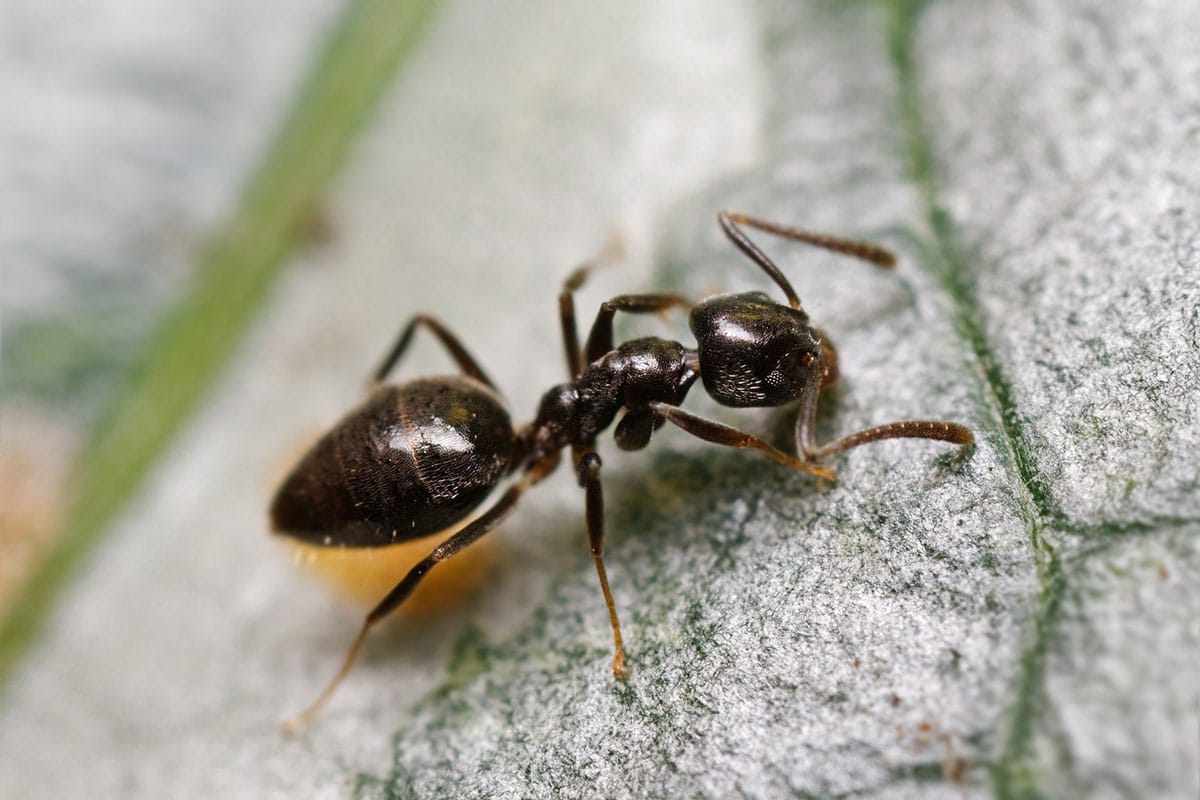With Spring nearly upon us, we will once again find an increased presence of ants in our environment. Ants love Spring for several reasons. Over the winter, ants keep each other warm by sharing body heat in clusters and slowly digesting fats and carbohydrates in their bodies. When we experience a warm Spring Day, notably after a spell of precipitation, ants will break their dormant nature, scavenge for more resources, and search for better living conditions. When temperatures start to exceed 50 degrees Fahrenheit, the dormant nest will generate enough energy for the colony to send out a few scouts in search of an upgraded dwelling and the supplies needed for expanding or relocating nests. Spring showers also bring more moisture which ants will use to quench their thirst and store away for later use. Other insects also bring about the emergence of ants. Aphids will begin to produce honeydew in early Spring which attracts ants in large numbers. As aphids digest plant material, they produce a reliable source of sweet excrement that ants cannot resist. Three ant types commonly make their way inside homes and building structures during the Spring season, these are the Odorous House Ant, the Carpenter Ant, and the Moisture Ant. They know where humans live and work is where supplies, but more importantly heat, can sustain a continually active colony.
The Odorous House Ant: Also known as the Sugar Ant, and one of the most common household pests in the country, it forages heavily for honeydew, which makes the Springtime aphid activity a great opportunity to search for food. Though the nickname Sugar would have you believe that they only have a palate for sweets and treats, Odorous House Ants also enjoy grease, meat, and vegetables. If vegetation were to make contact with a building, these ants are likely to find safe passage to an abundance of food to their liking. A standing puddle of water can also bring the interest of scouts since ants need a water source for survival. More important to these ants are the voids within your home or business where nests can flourish in great numbers. Consistent warmth generated from the interior provides these ants the ability to grow the colony quicker without the dip in energy associated with cooler temperatures. Odorous House Ants do not have a single queen but can expand to hundreds of queens with thousands of workers, making infestations a major nuisance.
Carpenter Ants: Frequent rainfall during the Spring season will bring about these notorious ants who prefer damp and rotting wood for easier excavation. As the Carpenter Ant extends its living quarters within the wood, channeling this out for extensive walkways, the wood increasingly weakens. To fuel themselves, Carpenter Ants also have a versatile diet including consuming other dead insects, making them strong survivors. Like Odorous House Ants, Carpenter Ants are also attracted to standing water and aphids. Carpenter ants have a unique relationship with aphids, working as security guards in exchange for food. They ensure that aphids eat and continue to produce honeydew while fending off their natural predators. While working as muscle for aphids, these ants continue the search for damp wood and standing water, inevitably bringing them closer to your home. Look for vegetation that touches windows and areas of wood exposed to wet conditions. Once they have established a nest, typically you will find piles of frass, otherwise known as ant sawdust, on the ground below or hanging from the entry point. This is a telling sign that these wood destroying ants have found a place in your home. Secluded places like crawlspaces and underneath siding are places where this frass is most often found.
Moisture Ants: Like that of Carpenter Ants, Moisture Ants tend to aphids in exchange for food and enjoy moist environments. They will commonly nest around areas that provide consistent moisture, like plumbing fixtures, gutters, and drains. These ants prefer the warmth of Spring, active aphids, and standing water, but the discovery of wood damage by structural issues such as leaky plumbing or faulty gutters will bring about Moisture Ants in greater numbers. While Carpenter Ants will excavate wood to create their own space, Moisture Ants will establish themselves in wood that has been decaying for some time. An infestation of these ants is a sign of wood in desperate need of replacement. Moisture Ants will exacerbate the decay of the wood they inhabit by building mud tubes to keep wood constantly damp. Spring showers contribute to the excessive dampness and high humidity which helps these pests sustain their way of life.
The Spring Season brings forth a variety of favorable elements for the ant and its survival, and while you might think that an active infestation would readily reveal itself, ant sightings are often rare, especially for those infestations occurring inside the home. Ants would rather avoid disturbance and unnecessary risks to the queen by sending out only a few colony members at a time to decrease the risk of exposure. Carpenter ants for example will begin scavenging at dusk to avoid detection of predators, so homeowners are often unaware that ant activity is occurring around the home. So how can you help prevent ant intrusion and infestation of your home or business? To start, it is imperative to monitor wood exposed to wet conditions for damage, frass, and mold, remove standing water away from the home, cut back and down vegetation in contact with the structure, and if you notice signs of ant presence in your home or business, contact a reliable pest control company to investigate the issue. The sighting of several ants inside the home can often be a sign of a much larger problem. Contact us today!






